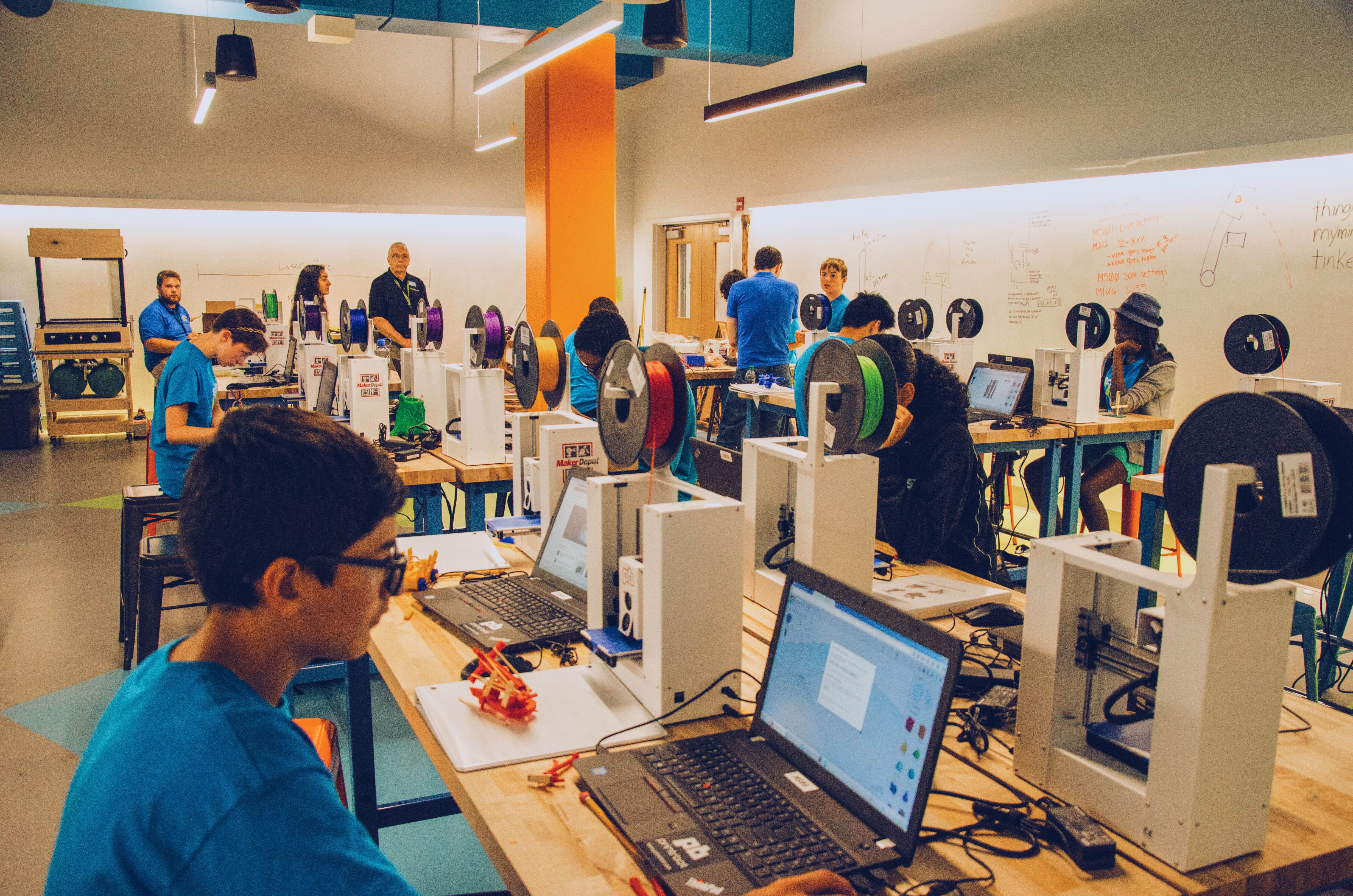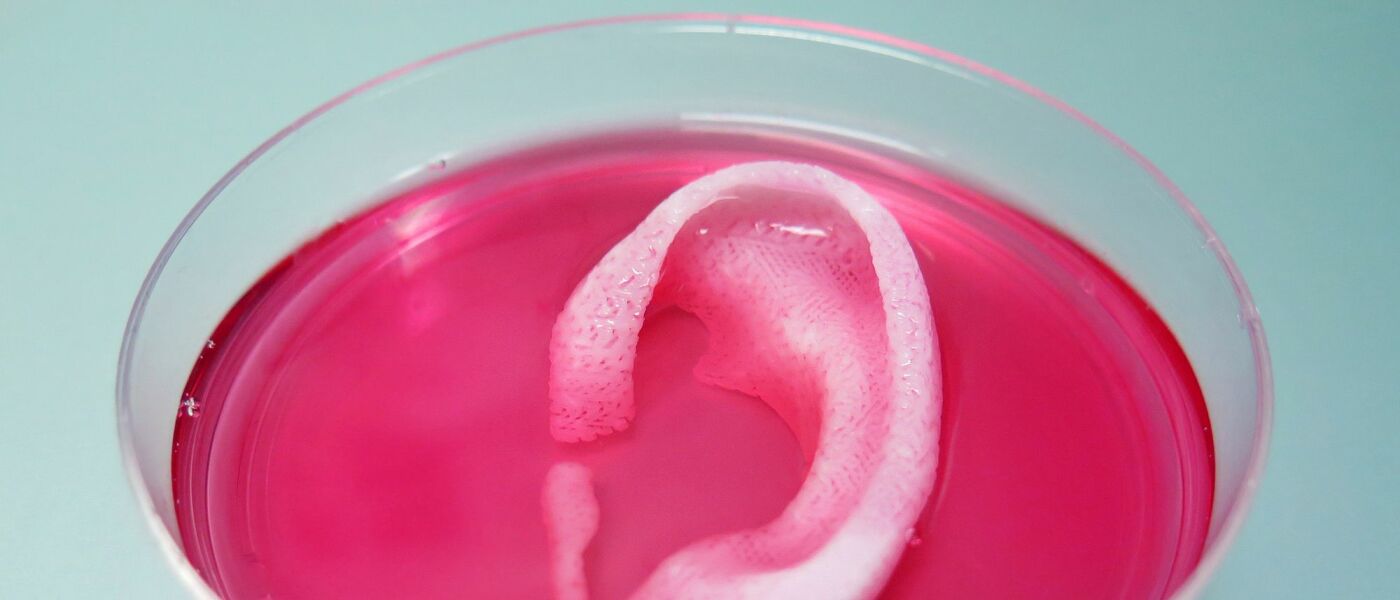Can 3D printers be used to create human body parts?
This summer, Liberty Science Center unveiled its brand new MakerLab in the Jennifer A. Chalsty Center for Science Learning and Teaching. As a STEM educator here at LSC, I was one of the fortunate staff members who had the opportunity to tour it before it opened. I marveled at the lab’s collection of 3D printers, some designed for student use and some more specialized. I even had the opportunity to print out my own blinking, 3D LSC badge!
Inspired by this experience, I wondered what additional benefits this new technology could unleash. As an occasional facilitator in LSC’s Live From Surgery Program, I was curious how 3D printers could be used to replace body parts.
In my research, I discovered that scientists at Wake Forest Baptist Medical Center have developed a new kind of 3D printer that combines two different materials. The first is a harder, plastic-like tissue-building material that shapes the body parts; the second is a delicate water-based gel that holds tissue cells in place. The printed body parts come with built-in channels, so nutrients and oxygen from the body can flow into the new tissue after it is implanted. The baby-sized ear seen above was printed and implanted in a mouse where it was kept alive for two months. The Wake Forest team has so far printed out soft muscle, cartilage, and hard bones.
Scientists at Wake Forest Baptist Medical Center have developed a new kind of 3D printer that combines two different materials. The first is a harder plastic-like tissue building material that shapes the body parts, while the second is a delicate water-based gel that holds tissue cells in place. The printed body parts come with built-in channels, so nutrients and oxygen from the body can flow into the new tissue after it is implanted. The baby-sized ear seen above was printed and implanted in a mouse where it was kept alive for two months. The Wake Forest team has so far printed out soft muscle, cartilage and hard bones.
In June 2011, a different 3D printer in the Netherlands – using titanium power heated and fused together by a laser – created a lower jaw that was fitted to an 83-year-old woman’s face. The same year, in a separate project at Washington State University, engineers demonstrated how 3D printed scaffolds could be used to promote the growth of new bone tissue.
Most of these projects are still in the experimental stage with animal subjects, but the potential is great, as is the need. As you read this article, about 120,000 people in the US are waiting for life-saving replacement organs like kidneys and hearts. Every day, 22 people on these waiting lists die. By producing a range of tissues, 3D medical printers could one day help to eliminate these waiting lists by printing fully-functional, artificial human organs.

If you are contemplating the need for an implanted tissue or organ in the near future, hang on. Thanks to 3D printer technology, artificial replacements may be just around the corner.
Rich Cohen is a STEM educator at Liberty Science Center. You can catch him around LSC doing Live Science Presentations or traveling around the area facilitating the Traveling Science Programs.
